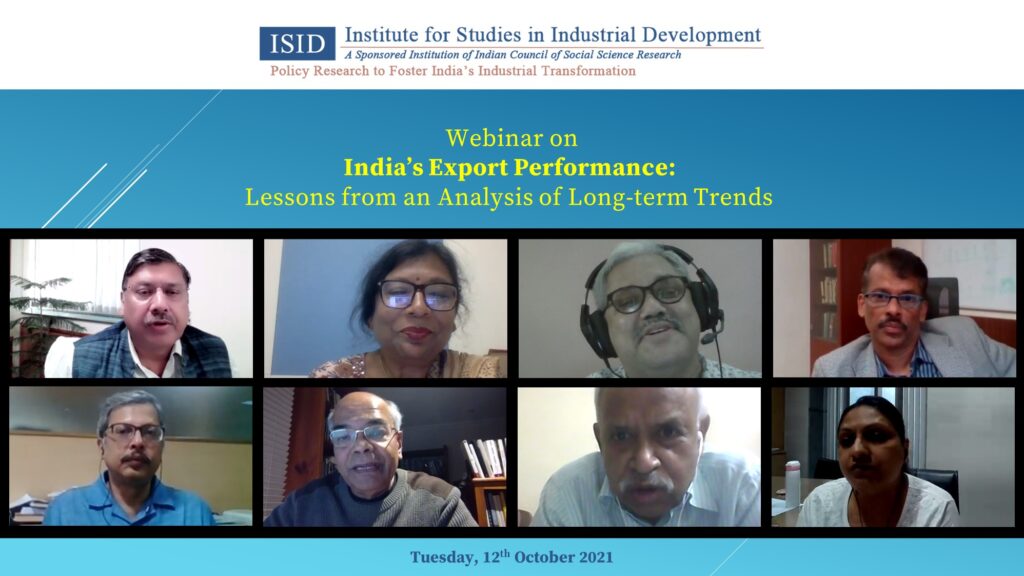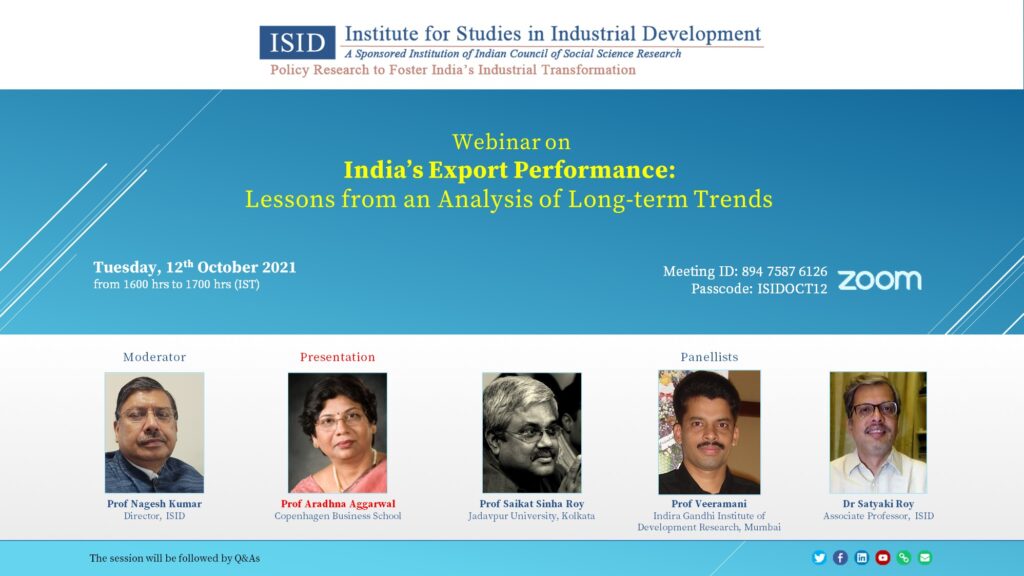ISID organised a webinar “India’s Export Performance: Lessons from an Analysis of Long-term Trends” on December 12, 2021. It was an engaging discussion based on Professor Aradhna Aggarwal’s (Copenhagen Business School, Denmark) insightful paper on the topic. The discussion was moderated by Prof Nagesh Kumar. The presentation was followed by discussion by Prof Saikat Sinha Roy, Jadavpur University, Kolkata; Prof Veeramani, Indira Gandhi Institute of Development Research (IGIDR), Mumbai; and, Dr Satyaki Roy, Associate Professor, ISID .

The paper traces the trajectory of export growth covering a period of about four decades and highlights the export slowdown since 2010. It underlines the variations of exports caused by intensive and extensive margin where the contribution of new products did not play a significant role. What the paper also highlights is that there has been a churning of India’s export basket; as a result, conventional products that use to show high revealed comparative advantages are losing ground while new products are gaining importance. However, there has not been much structural shift in the export basket as the resource-intensive products continue to hold a larger share despite a declining trend visible in the recent past. In terms of technology intensity, the change is towards the rising share of medium and high technology products while the share of low technology intensive products shows a decline.
The paper argues that growth in exports largely depends on the complexity of products and India is clearly moving towards exports of some more complex products. Traditional export products such as textiles, leather, and food products are gradually being replaced by non-traditional products such as machinery, base metals, chemicals, transport, rubber, and plastics. The paper raises an important question of self-reliance, and how we interpret the notion in a globalised world. In order to be competitive in the global market and to earn foreign exchange for our necessary imports, we need to move ahead from unskilled labour-dependent resource-intensive products in our export basket to an upgraded trajectory of producing more complex products.
In the discussions following the presentation, some important issues were raised by the three panellists. One important aspect is the mixed signaling on the part of the government with regard to exports that increases the tariff on the one hand and advocates a liberal FDI policy on the other hand. The inverted tariff structure also discourages assembly activities. In the context of measuring complexity it was pointed out that complexity levels need to be measured in terms of value added rather than in terms of output, particularly in the context of global value chains. It was also pointed out that if possibilities of exports really depend on the proximity to existing exports, then the growth of differentiated demand in domestic market is important and technology self-reliance should go beyond the notion of incremental gains in complexity and develop specialisation in certain areas which would enable India to reach the specific technology frontier ahead of others.


